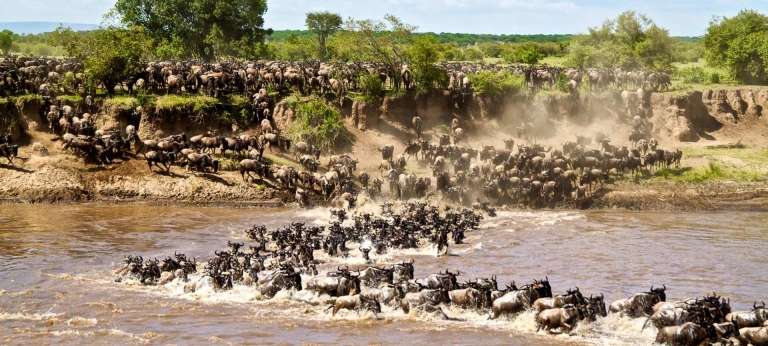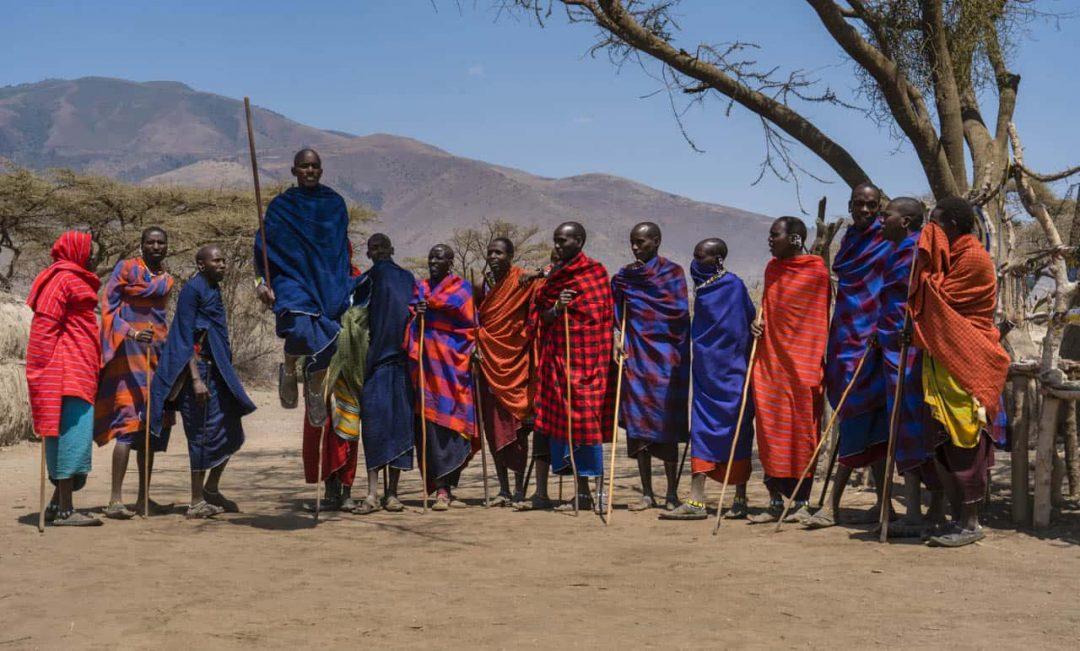Tanzania Travel Guide, Tanzania Safaris tour
This is the Tanzania Travel Guide which will give a clear plan on booking Tanzania Safaris to Tanzania wildlife Safari destinations for Tanzania wildlife Tours
How to reach Tanzania by air – Tanzania Travel Guide
There are many international airlines reaching Dar es Salaam, Kilimanjaro and Zanzibar international airports. Internal flights connect Kilimanjaro – Arusha with Dar es Salaam and Zanzibar.
Best Travel Period – Tanzania Travel Guide
The best time of the year to visit Tanzania is between June and October. Between December and March there are less tourists and the temperature is higher.
Luggage – Tanzania Travel Guide
We advise you to travel light as most of the trip will be on the safari vehicles. Remember your backpack for the trekking.
Documents and Visa entry fees
Visas are issued directly at the airport on arrival or at the border with Uganda and Kenya and cost between 30 and 50 USD depending on the nationality.
Health requirements – Tanzania Travel Guide
Vaccinations against yellow fever in Tanzania are no longer required. Risk of malaria is present so we advise you to take anti malaria treatment.
Currency and Exchange rate
The currency is the Tanzanian Shilling (TSh). One dollar is about 1.560 TSh.
Suitable clothing – Tanzania Travel Guide
It is advisable to dress in light casual clothing. Something warm should be brought along for early morning and evenings. Safari clothes are available and can be bought from hotels/lodges/camps.
Cameras and Videos – Tanzania Travel Guide
Films are available in major towns. Photography is allowed apart from the restrictions on military buildings and official or government institutions.
Telephones
It is easy to make local and international calls using the Tanzania Telecom offices or private shops. Mobile phones are very common and the network coverage is high, especially for the provider Vodacom.
Popular Tanzania Wildlife Safaris Arranged by Acacia Safaris
8 Day Tanzania Wildlife Safari; The 8 Day Tanzania Wildlife Safari will make you to explore The comfortable weather and unparalleled scenic beauty with roads that run through it, littered with campgrounds and lodges, excellent year-round wildlife viewing; flocks of flamingos, silent families of giraffes, noisy packs of wild dogs, lions with no trouble finding lunch; zebras roaming around waiting for sunset. Read More…
11 Day Tanzania Wildlife Tour; The 11 Day Tanzania Wildlife Tour, With your naturalist guide, leave for Tarangire National Park, Tanzania’s third largest National Park and sanctuary to an unusually large elephant population. Majestic baobab trees are an interesting feature of the park that dwarf the animals that feed beneath them. Animals converge along the Tarangire River, Read More…
12 Day Tanzania Cultural & Nature Walk; The 12 Day Tanzania Cultural & Nature Walk Tour, With your naturalist guide, leave for Tarangire National Park, Tanzania’s third largest National Park and sanctuary for an unusually large elephant population. Majestic baobab trees are an interesting feature of the park that dwarf the animals that feed beneath them. Animals converge along the Tarangire River, which provides the only everlasting water supply. Read More…
18 Day Kilimanjaro Hiking Tour Tanzania Zanzibar Adventure safari; The 18 Day Kilimanjaro Hiking Tour Tanzania Zanzibar Adventure safari will make you explore the Best of Tanzania safari includes all of the major highlights of Tanzania – from climbing Mt. Kilimanjaro to a Lodge Safari in the Ngorongoro Crater, Serengeti and Lake Manyara. From here you proceed to relaxing on the white sandy Indian Ocean beaches of Zanzibar. You will not regret your Safari. Read More…
Most Visited Tanzania Safari Tour Destinations / Where to go for a Tanzania Wildlife Safari
With about 30% of the territory under protection, Tanzania counts 13 national parks, 16 wildlife reserves, the Ngorongoro Conservation Area, marines parks and protected areas. The Northern Circuit is the most popular for game safaris and includes Serengeti, Ngorongoro, Tarangire, Lake Manyara, Mt. Kilimanjaro.
Thousands upon thousands of wildebeest that march in mindless unison on the annual migration through the Serengeti, perhaps? Or a family of elephants wading across the wide, muddy Rufiji/Tarangire River? What about a pride of well-fed lions sunbathing on the grassy floor of the majestic Ngorongoro Crater? Certainly, it is such images that tend to spring to mind when one thinks of Tanzania. And properly so!
Tanzania, truly, is a safari destination without peer. The statistics speak for themselves: an unparalleled one-quarter of its surface area has been set aside for conservation purposes, with the world-renowned Serengeti National Park and incomprehensibly vast Selous Game Reserve heading a rich mosaic of protected areas that collectively harbor an estimated 20 percent of Africa’s large mammal population.
SERENGETI NATIONAL PARK TANZANIA; Serengeti National Park with 14,763 sq km is the largest Tanzanian park, contiguous with Kenyan Masai Mara and extending almost to Lake Victoria. Read More…
LAKE MANYARA NATIONAL PARK TANZANIA; Lake Manyara National park is one of the most popular Tanzanian parks along the Northern circuit. It is located on the ridge of the Rift Valley, with the escarpment in the western border of the park. Read More…
TARANGIRE NATIONAL PARK TANZANIA; Tarangire National Park is located along the Tarangire river, to the south of Lake Manyara. During the dry season, from August to October,Tarangire has one of the highest concentration of wildlife than any other African national park. Read More…
NGORONGORO CRATER CONSERVATION AREA; The area is located between the Serengeti and Lake Manyara. The area covers about 8.300 kms including Olduvai Gorge, Lake Ndutu and Masek and a series of volcanoes most of which are inactive. Read More…
MOUNT KILIMANJARO TANZANIA; Kilimanjaro is a giant volcano reaching an elevation of 5,895 m with Uhuru Peak. Other names for this volcano are: Kilima Dscharo, Oldoinyo Oibor (white mountain in Masai) and Kilima Njaro meaning shining mountain in Swahili. Read More…
RUBONDO ISLANDS; Visit the Rubondo Island National Park for nature walking, relaxing, fishing, boat Excursions, Bird Watching, name it. Tanzania’s tenth National Park and the only one in Lake Victoria, Rubondo Island is located in the southwest of Lake Victoria on a 240 sq. km island. Read More…
Most Popular Kenya Wildlife Safari Ideas / Kenya Safaris Tour Options
- 3 days Samburu Safari Kenya Wildlife Tour
- 6 days Maasai Mara Kenya Wildlife Safari
- 6 Days Kenya Wildlife Safari
- 7 Days African Big Five Safari Kenya Wildlife Tour
- 7 Days Kenya Wildlife Safari
- 7 Days African Big Five Safari Kenya Wildlife Tour
- 8 Day Magnificent Kenya Tours
- 8 Days Kenya Wildlife Safari / Wildebeest Migration in Kenya
- 8 Days Kenya Wildlife Safaris Tour
- 9 Day Kenya Elegant Wildlife Safari / Kenya Wildlife Safaris Tour
- 11 Days Kenya Wildlife Safari / Wildlife Safaris in Kenya
- 12 Days Kenya Wildlife Safari Tanzania Wildlife Tour
Kenya Safari Destinations / Where to go for Wildlife Safaris in Kenya?
Maasai Mara National Reserve: Masai Mara is the most famous and most visited reserve in Kenya. Since it is protected as a reserve and not as a national park, Masai Mara is not managed by Kenya Wildlife Service but by the local authorities, namely District Councils. The protection of this area, among other factors, favoured re-population of the territory by the Maasai tribes, who by virtue of the reserve status were put in charge of the reserve’s management through the District Councils. Read More…
Amboseli National Reserve Kenya: Amboseli lies immediately North West of Mt. Kilimanjaro, on the border with Tanzania. Amboseli was established as a reserve in 1968 and gazetted as a National Park in 1974. The Park covers 392 kms and forms part of the much larger 3,000 Kms Amboseli ecosystem. Large concentrations of wildlife occur here in the dry season, making Amboseli a popular tourist destination. Read More…
Samburu National Reserve Kenya: Samburu, Buffalo Springs and Shaba are the most remote and inaccessible among the popular reserves located in Northern Kenya along the banks of the Ewaso Ngiro river. Shaba, the less visited of the three, is also the largest, with a total extension of 239 km. Samburu and Buffalo Springs are similar in surface area, 165 km and 128 km respectively. The area has been traditionally inhabited by the Samburu people, a nomad paranilotic tribe closely related to the Maasai. Read More…
Lake Nakuru National Park: Lake Nakuru is a very strong alkaline lake 62 kms in extent. Since its gazetting in 1968 as a national park, both authorities and conservation organisations have kept on winning the battle to private property and human settlings, further broadening the park limits in 1968 and 1974 to its current extension of 188 kms. The park is easily accessible, since Nakuru is the fourth city in the country and the headtown of the Rift Valley. The park covers the lake and a land strip around the northern, Read More…
Aberdare National Park: Created in 1950, Aberdare National Park is located in the Central Highlands. The landscape is made by the moorland, peaks and forest of the Kinangop Plateau in the South and the Salient rain forest in the East. Read More…
Mount Kenya National Park: Mt. Kenya is an imposing extinct volcano dominating the landscape of the Kenyan Central Highlands, east of the Rift. Mt. Kenya lies about 140 km North, North-East of Nairobi with its Northern flanks across the Equator. Read More…

wildebeests migration
Kenya Safari Attractions / What to See on A Kenya Wildlife Safari?
ABERDARE RANGES; The ranges are 343 kms from Nairobi and are at an altitude of 2500-4000 ft occupying an area of 104 sq. kms. The Aberdare National Park is part of the Aberdare Mountain Range. Deep valleys, streams and rivers as well as cascading waterfalls feature in this region. Read More…
BIG FIVE; Amboseli National Park is one of Kenya’s most prevalent parks on account of the astonishing view it exhibits of nearby Mount Kilimanjaro, the world’s highest freestanding mountain. If you travel to Amboseli National Park, be sure of finding flocks of elephants with the unforgettable views of Kilimanjaro. Read More…
KENYA BEACH HOLIDAYS; This is usually the last part of your safari around Kenya. After spending time in the bush on safari, take a few days to relax on the beaches and catch a tan before heading home. Read More…
MOUNT KENYA; The region affords an excellent game viewing. Examples include the black and white Colobus and Sykes bushbuck, elephant, monkeys, buffalo, black rhino, waterbuck, genet cat and the bongo, Read More…
MOUNTAIN MERU; A commonly accepted area as the setting where Elsa, Joy Adamson’s lioness, was returned to the wild (Born Free 1960 – Written by Joy Adamson). Meru provides an astonishing combination of incomparable habitats. On the lower slopes of Mt. Kenya, Read More…
NAIROBI CITY; This is a great vacation site where you can get your films developed, wander through bookshops and send off your postcards. This Safari vacation in Nairobi is almost inevitable. Stay in Nairobi, you’ll find a town full of hustle and bustle, Read More…
WILDLIFE AND SCENERY; This is where the refreshing waters of the Ewaso Ngiro River run through Samburu and draw towards plenty of wildlife – including lions, giraffes elephants and zebras. Leopards are also regularly spotted. Read More…
THE GREAT RIFT VALLEY; Visit one of the wonders of the world on a Great Rift Valley tour. The valley forms a wide trench (about 5400 miles long) down the length of Africa that is visible from the moon. When planning to have a vacation at the Great Rift Valley in Kenya, Read More…
TREKKING SAFARIS; Maralal National Reserve is one of Kenya’s little-known treasures. Tucked away in the center of the country amidst the Ol Doinyo Lenkiyo Mountains. Maralal completely surrounds the Samburu town of the Maralal within the Reserve’s boundaries. It is one of the best places for trekking safaris, Camel safaris, and walking safaris. Read More…
[captainform id=”1286473″]



